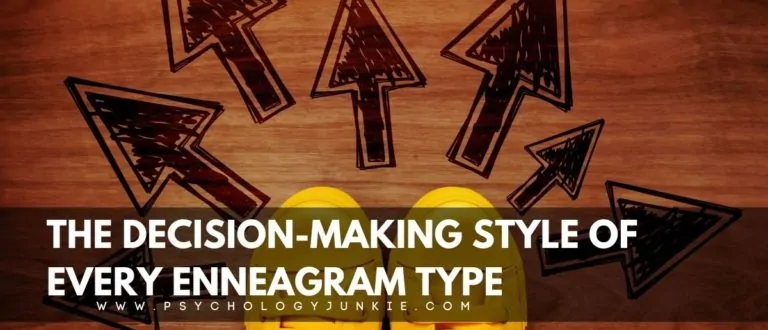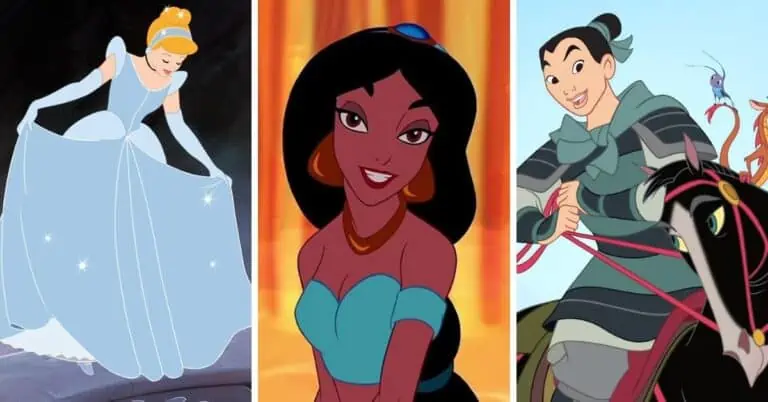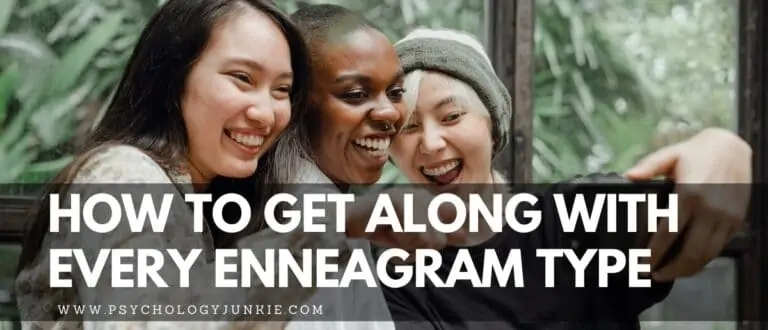18 OCTOBER 2021 / BY SAMANTHA MACKAYClinically Reviewed by Steven Melendy, PsyD. on October 18, 2021
This blog post is part of our Fundamentals of the Enneagram series, which takes a deeper dive into all the Enneagram elements – wings, arrows, subtypes, centers of intelligence, growth pathways and more. For an overview of the series, start with our introductory post here. For an understanding of arrows, check out this post.
Arrows are resources for growth; they provide us with strategies for tackling challenges that our personality type naturally struggles with. But it isn’t a free-for-all. Rather, the Enneagram provides us with a roadmap.
WHAT KIND OF GROWTH DO YOU NEED?
There are times when we need some incremental growth and other times when we need to go big and make some wholesale changes in how we approach life. Think of it like evolution versus revolution. For small, evolutionary changes, look more to what wings can offer you. But if you are getting more and more frustrated with your personality’s continual failure to navigate a problem, it might be time to start a revolution. And for that you need your arrows.
THE PATHWAY: ENERGIZING AND RESOLUTION
When consciously using your arrows for growth, it is essential to start with your Energizing arrow. That is the arrow pointing towards your personality type, known as the against arrow.
For an Enneagram Eight, the Energizing point is found at Two. For Fours it can be found at One. For Fives it can be found at Eight, and for Sevens it’s at Five.
When we are able to master the skills that point provides us, we expand our capacity to tackle the challenge posed by the forward or Resolution arrow. At the Resolution point we became a more nuanced, calmer person, able to recognize our needs, respect ours and others boundaries, and pause before taking action.
For an Eneagram Eight, the Resolution point is found at Five. For Fours it can be found at Two. For Fives it is at Seven, and for Sevens it’s at One.
DON’T BE IN A RUSH TO CHANGE
As we discussed in last week’s article, it is far easier to unconsciously go to the low side of an arrow when we are under pressure or looking for a way to get our needs met, than it is to go to an arrow’s “high side.”
So, before you start trying to change yourself, start by observing your own behaviors. Aim to simply catch yourself moving to the arrows, and observe what happens, before you try to force yourself to change.
Once you have noticed yourself acting out, get curious about it. Reflect on the deeper reasons for the shift. Some questions you can ask yourself include:
- In what way do you feel under pressure?
- Is that coming from you or the environment around you or both?
- What needs are going unmet in this situation?
- What impact is this behaviour having on yourself and others?
APPLYING ARROWS: PRACTICES FOR YOUR TYPES
Let’s take a brief look at the practices you can use to intentionally move to the high side of your arrows, as well as the benefits you will get from mastering the challenges at each.
We’ll start with the three Body types, then move to the three Heart types and wrap up with the head types.
Not sure what that means? Read our introduction to the Centers of Intelligence.
ENNEAGRAM TYPE EIGHT
The movement to Two provides Eights with the ability to consider other people. They become more aware of their impact on others and are able to cultivate better relationships. To achieve this, they need to learn to listen to other people, and start to make space for their feelings. When they integrate Two’s qualities, Eights become more diplomatic and able to encourage people to take action without imposing or offending them.
Then an Eight can move to point Five. Here, they master patience and being able to count to three before taking action. It also helps them appreciate that they don’t need intensity to be in relationships, or to project their energy out to be effective. At point Five, Eights can keep their energy inside their body and channel it in greater mental focus. To achieve this, Eights need to focus on using their analytical skills and taking a more cautious approach to their use of energy and resources.
ENNEAGRAM TYPE NINE
The movement to Three provides Nines with the ability to consider themselves and their interests. When Nines acknowledge they are important, and value their own efforts, they are able to prioritize their own goals, tasks and agendas. To achieve this, Nine’s must identify and prioritize what they want and take the initiative to put it into action. When they integrate a Three’s qualities, Nines become more energetic and dynamic, feel self-confident, and are able to positively promote themselves.
Then a Nine can move to point Six. Here, they master conflict and being able to stand up for something that is important to them. It helps them to say no, go against someone else’s opinion, and have greater boundaries with others. To achieve this, the Nine needs to use the Six’s critical analysis and risk assessment skills. This helps them stay present to what is happening, rather than slipping into self-forgetting. Then, Nines become skilled at entering into conflicts, instead of avoiding them. They learn to mediate while still expressing their own opinion.
ENNEAGRAM TYPE ONE
The movement to point Seven provides Ones with the ability to be mentally flexible and see many options. It allows them to break the rules and be more creative and spontaneous. To achieve this, Ones need to practice having fun and being playful on a regular basis, and to not be hard on themselves for choosing pleasure ahead of duty. When they find the healthy balance between responsibility and relaxation, the One is less rigid and less focused on being right. They are able to see the shades of gray that exist in every situation.
Then a One can move to point Four. Here, they master their creativity. At point Four, Ones question what they really want from life and become more attuned to what they want and like. They can let go of the fierce self-control and do things differently. To achieve this, Ones practice expressing their emotions authentically and developing a creative practice. When they master Four, Ones bring a unique touch to their work, incorporating a sense of beauty and magic into everything they do.
ENNEAGRAM TYPE TWO
The movement to point Four allows Twos to appreciate that honoring their own emotions actually helps them maintain positive relationships, instead of undermining them. Here, Twos gain the ability to get in touch with their own needs, feelings and desires, and to accept all of their feelings and not be embarrassed by them. To achieve this, Twos practice acknowledging their feelings and asking for what they want.
Then a Two can move to Eight. Here, they master setting boundaries. At point Eight, Twos become more direct and assertive, clearly saying what they need and what they don’t like. They become more practical and stop worrying about how others perceive them. To achieve this, Twos practice accessing their anger in a positive way, using it to get their needs met more directly.
ENNEAGRAM TYPE THREE
The movement to point Six provides Threes with the ability to question the status quo. Most importantly, it allows them to assess the risks associated with their current lifestyle, helping them determine the consequences for their relationships, family and health if they continue living and working the way they do. To achieve this, Threes need to develop some self-doubt about their current choices and use the Six’s natural ability to analyze risks and take a more cautious approach. By doing so, Threes develop a healthy balance between getting things done and pausing for reflection.
Then they can move to point Nine. Here, they master the art of relaxing and can finally take a vacation. They can slow down their pace and wait for the right time to act, and they can listen to others more, paying attention to someone else’s agenda. To achieve this, the Three practices including others in the process and following other people’s lead.
ENNEAGRAM TYPE FOUR
The movement to One provides the Four with healthy self-discipline and the ability to turn their creative ideas into action. Here, they become comfortable with routine, sticking with the agenda and not allowing their feelings to distract them from the task at hand. To achieve this, Fours devote themselves to structured activities where they focus on improving the external environment, like a garden, instead of trying to control their emotions. Repetitive work can help the Four find peace instead of getting caught up following the waves of their shifting moods.
Then they can move to Two. Here, Fours master the art of giving and receiving, allowing them to maintain mutual relationships. They stop comparing themselves to others, and instead help and support other people. To achieve this, Fours focus on being in service to others and balancing their needs with the needs of others.
ENNEAGRAM TYPE FIVE
The movement to Eight provides the Five with an ability to assert their boundaries while maintaining their relationships. Here, they have less of a need to disconnect and hide, instead becoming more practical, spontaneous and energetic. To achieve this, Fives practice becoming grounded in the body and using the body as a way to connect with the issues they have been avoiding. When they integrate the Eight’s qualities, Fives become more comfortable with confronting others and remaining in connection.
Then they can move to Seven. Here, Fives experience all life has to offer. They realize they can get their needs met spontaneously, so can start to move away from being excessively specialized and become more of a generalist. To achieve this, Fives practice talking before they are certain about something, allowing themselves to test ideas in a real-world practical way.
ENNEAGRAM TYPE SIX
The movement to point Nine allows the Six to trust people more. By becoming less suspicious of everyone and everything, Sixes increase their ability to confirm what is a real fear and what is imagined. To achieve this, Sixes practice listening to other opinions and being more receptive to their perspective. When they integrate the Nine’s qualities, the Six is able to let down their guard and relax some of the time.
Then they can move to Three. Here, the Six masters performing without procrastinating, and is able to move forward despite their fears. They are able to trust their own authority and have confidence in themselves, taking the lead and valuing their contributions. To achieve this, Sixes practice recognizing their contributions and appreciating their own abilities.
ENNEAGRAM TYPE SEVEN
The movement to point Five allows the Seven to increase their ability to concentrate and focus on a single activity. By bringing their energy inside of them, it becomes easier for a Seven to stick with one thing and they start to become specialists. To achieve this, Sevens practice saying no to interesting options and start putting down all the possible projects they mentally carry around with them.
Then they can move to One. Here, Sevens master the art of finishing things. They develop the self-discipline to see things through and find joy in completing things. They can develop this by working in a more structured way and finding ways to finish whatever they start.
ARROWS FOR PRACTICING GROWTH
Using arrows for growth can be a huge leap – one we aren’t always ready for. If you are embarking on this journey, think about the kind of support you will need and start with some self-observation and self-reflection. Take small steps and don’t be too hard on yourself. Growth is a journey.












I’m an INFP, and recently tested as a 4w5 on the Enneagram Test. I’ve read descriptions about the Type Four personality and feel that it suits me more than any other as far as a fundamental enneatype is concerned. I’ve also read about how Fours integrate into Ones under growth, but Ones disintegrate into Fours under stress. After reading this article, I still feel that Type Four matches me the best, but I also related a lot to the stressors of Type One, which confuses me a little since Fours disintegrate into Twos under stress (I also identified with the stressors of Type Two, which I guess is to be expected given this relationship between Four and Two). Is it possible for a Four to experience the same stressors of the One since unhealthy Ones equate to unhealthy Fours?
Type 1, Susan. Thank you for sharing. Kind of hit the spot.
Gilbert
I can’t remember what type I am from testing a while back, 4 or 5 maybe, but regardless, I feel stressed out by 95% of the things on every type’s list.
I am type 5w6 and the above descriptions about them are spot on, especially in feeling incompetent or incapable and being distrustful of people, especially of friends or close ones.